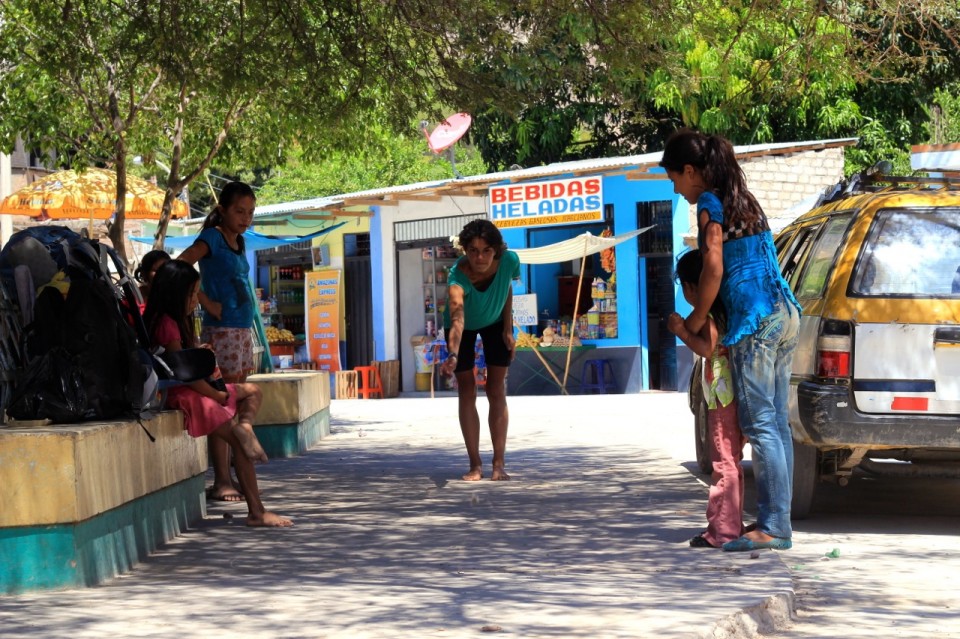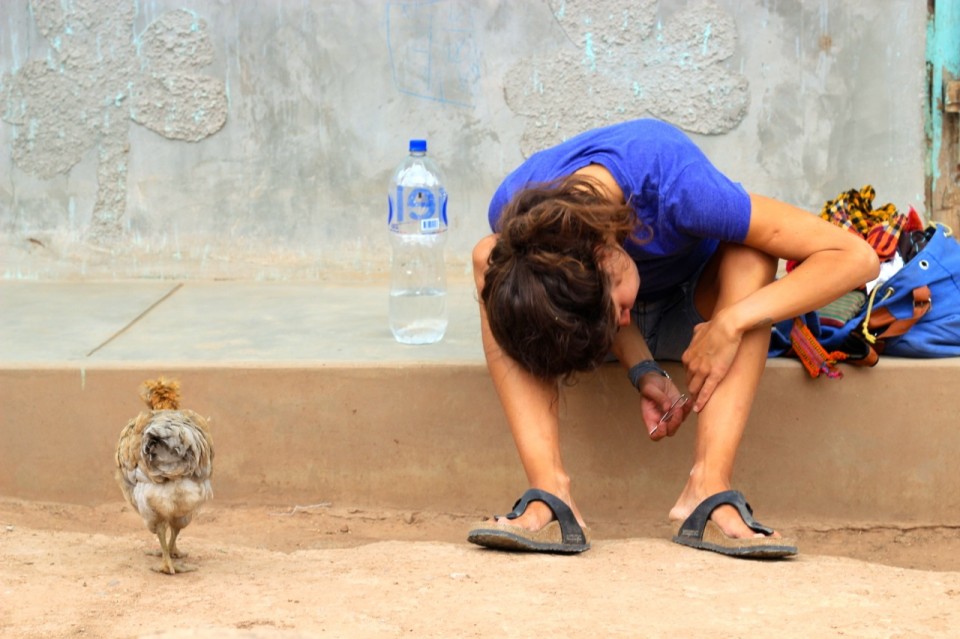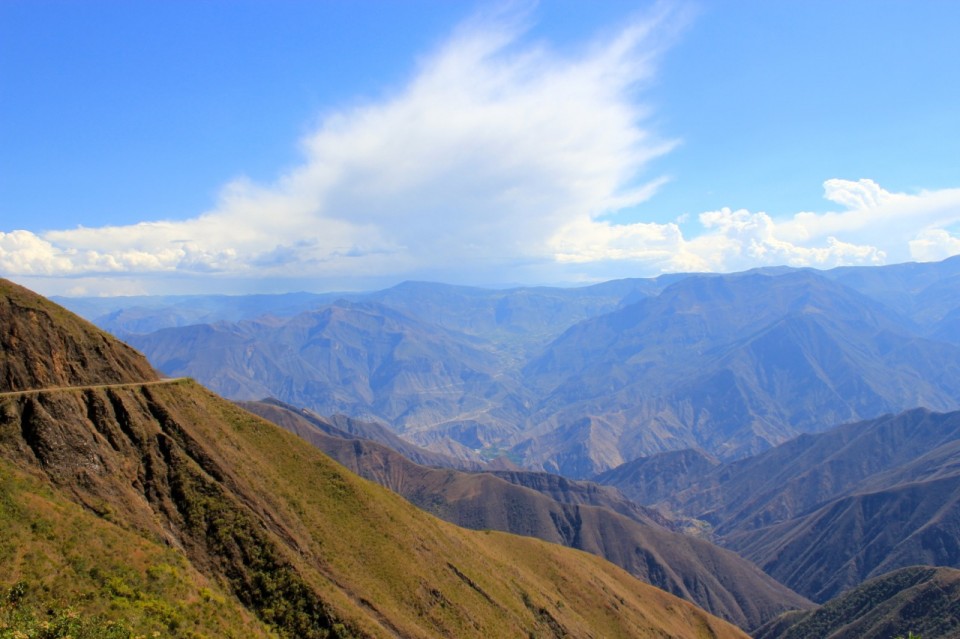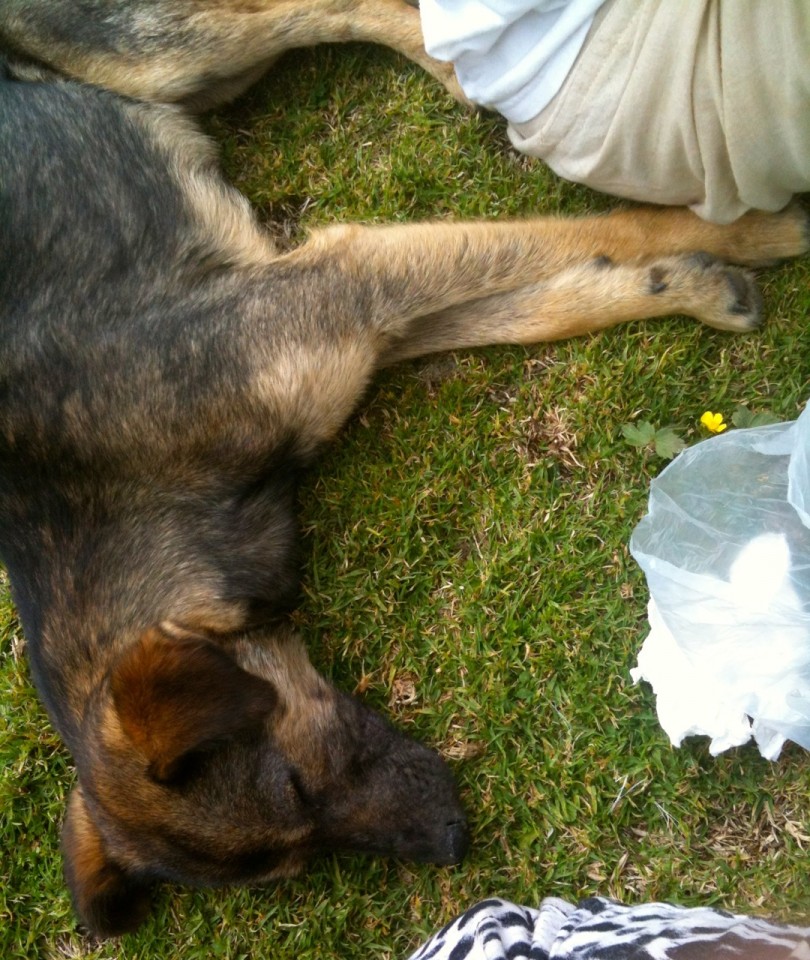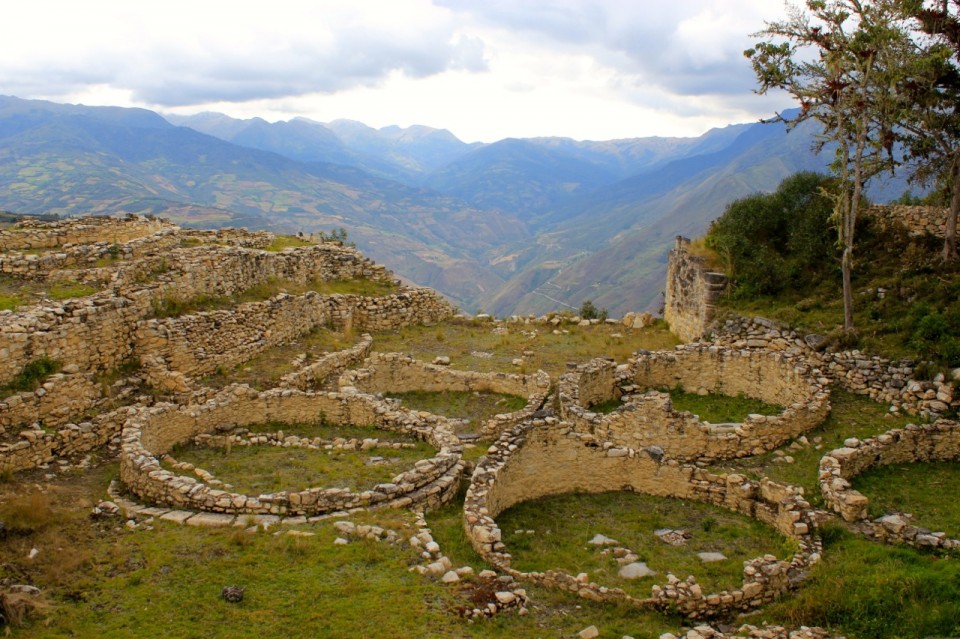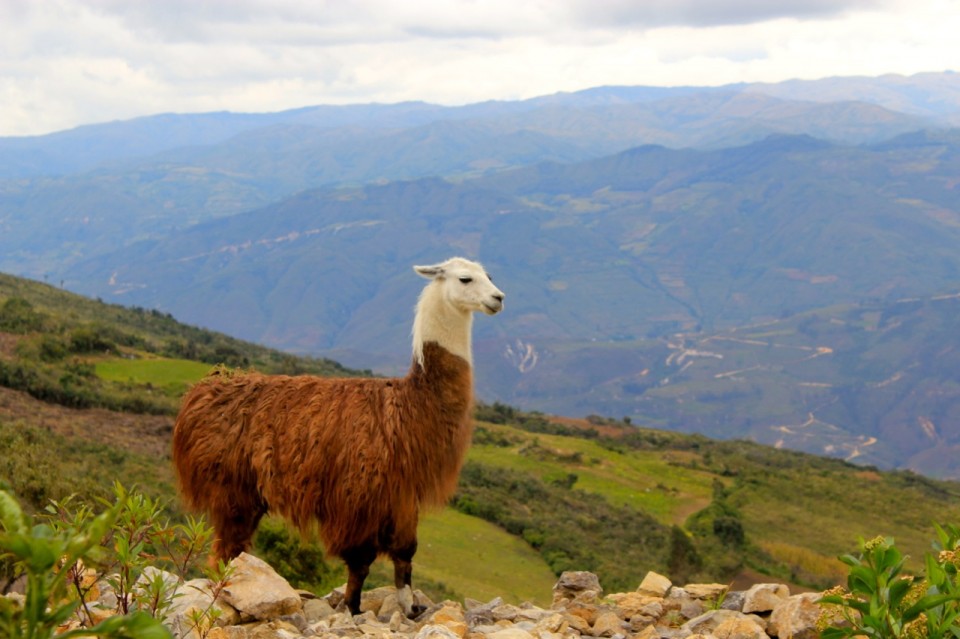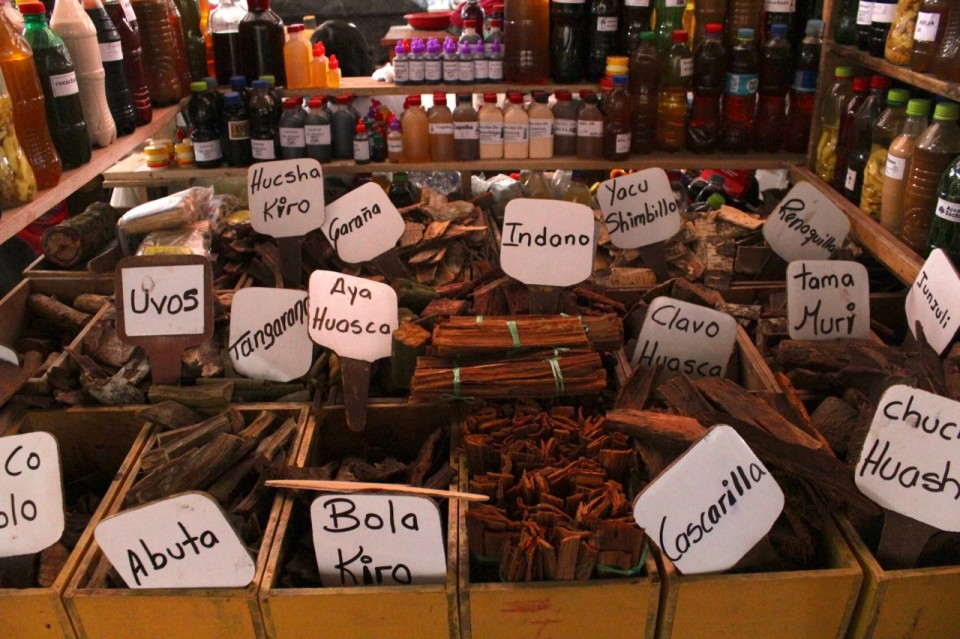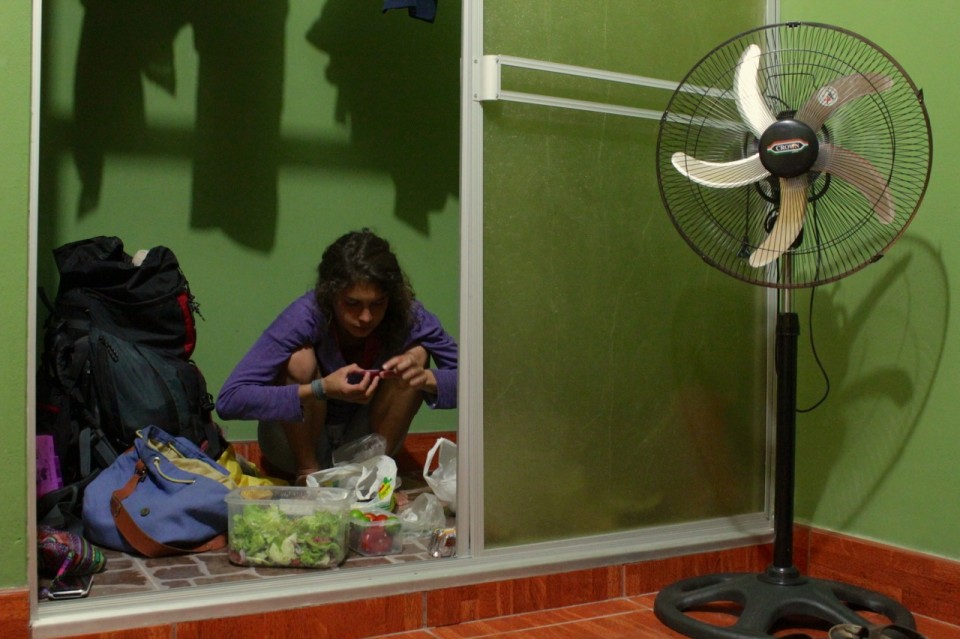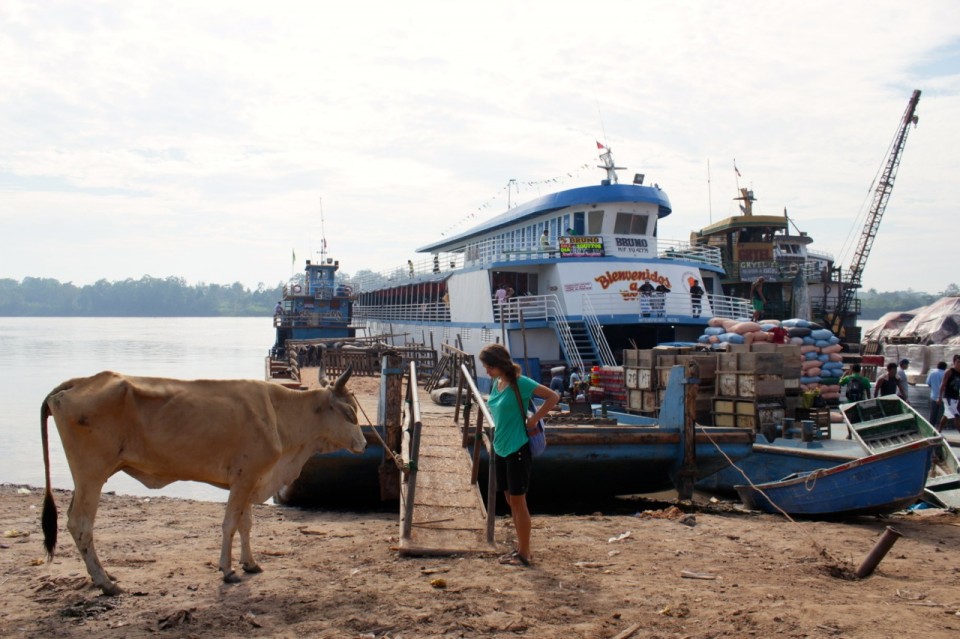Balsas is an interesting little place – it has less than one thousand inhabitants and the people’s main occupation is trade, just like in most of Peruvian little towns. In front of each house something is being sold: bananas, peanuts, beer or just-made lunch. They all know each other, of course, and the interesting part is, and also the part which the occidental people cannot easily understand, that they do not consider each other a competition. They may as well offer the same product, stand by each other, but they will never give each other the evil eye and you will never hear sad sighs if someone decides to buy something at someone’s neighbor. They even help each other: if they ran out of aji sauce (which can be literally found on every table in Peru, and its basic ingredient is aji – hot pepper) during the lunch, their neighbor/competitor is ready to help them out.
Even though Balsas is in the middle of the Andes the temperatures may rise up to 35°C with results in a great number of mosquitoes and some kind of miniature flies that bite. The reason why the temperature is that different from the rest of the Andes is because the village is situated in a plain surrounded by two mountain chains which also makes its vegetation a bit different. That way you can easily see palm trees and cacti growing side by side.
The time in Balsas flows just like the river that passes through it – slowly. The village would wake up from its dream once a day when a couple of cars or vans would drive through on their way from Celendin to Chachapoyas: in those couple of minutes all the locals would offer their products to the passengers hoping to earn few soles. Once again, there was no the area of competition.
There was only one hospedaje in the entire village, the cheapest one we’d been into in the entire Peru. Although we’d been told that there was a toilet with the room, we hadn’t been told that it was at the other part of the village: there were two squat toilets and two showering cabins and almost half of the village comes to take a pee or poop, take a shower, do the laundry and stuff like that. It was an excellent opportunity to hang out with the locals.
All in all, it is a nice little place. The kids would play Hopscotch, and Maria and I joined them (and beat them, muhahaha!) and with the arrival of the night older crew would come and play volleyball. Even though in Peru people are really short (when compared to them Maria is tall, that says a lot) they are crazy about volleyball. And they’re really good; in fact, they were that good that I didn’t dare to join them and I’d like to think of myself as a pretty good volleyball player.
By a pure chance we spent the following night in Balsas: we were headed towards Chachapoyas by hitchhiking and a father and a son, who were in the first car that pulled over, pointed at a van that was parked some twenty meters in front of us that was waiting for the people to get in. We said that we’d prefer if we could go with them and asked them if they could, por favor, give us a ride. They were okay with that so we hopped in a car that wasn’t in such a great state and observed the father teaching his under-aged son how to drive.
An hour later, when we arrived to the village where they dropped us off, we asked the father to show us which road we were supposed to take. We were a bit taken aback when he showed us the same road we took to get there. We didn’t believe him so we asked another by-passer and he repeated the same thing. In order to get to Chachapoyas we had to go back to Balsas and take a different road from the one we’d taken. Wonderful.
But hey, we had enough time. The only problem was that there didn’t seem to be absolutely anyone going to Balsas except for few vans that were supposed to leave at 4 pm, the following day. So, all we could do was sit on a crossroads and wait. We did all kinds of things during the following few hours: we chatted with the local ladies who invited us to go for a dip in a river, we observed a few chickens with really strange haircuts and Mare even had enough time to pluck out some leg hair.
And just as we were ready to give up on every hope and started thinking about spending the night in that place whose name we didn’t even know, a truck passed by: the driver agreed on giving us a ride in the side-truck with a woman and her three children. We were again on our way to Balsas.
Ten minutes before we were supposed to arrive I felt a strange aroma; at the same time I heard the voice of upset mother – her youngest kid, a boy, threw up all over her. Since Maria was right next to her she got a bit on herself, too. However, she remained calm and even offered the upset mother some tissues she had with herself and used a few to clean herself. The scene reminded me of my first ride in an Indian train when I got peed on, and bled on my feet, but I didn’t mention anything to Maria. I didn’t think she was up for a talk. I was right.
The following day we informed a bit and found out that there wouldn’t be a single vehicle passing through the village before 2 pm because the road leading to the village was closed. So, we ate some ice cream and played Hopscotch with the girls. There were other people waiting for the transportation and all of them were patient and seemed careless. They were completely different from the people in the occidental countries where if someone is a bit late or if there is a change in a schedule people instantly throw a tantrum. They’re always in a hurry. Here a man can learn how to be patient.
Finally, a few vehicles did pass by and we chose a bus that was supposed to take us to Tingo, a small village with six houses at its best, but it was famous for one thing: it was the place where the climb to Kuelap, Machu Picchu of the north, began. In the bus we noticed a new activity we hadn’t ran into before – the conductor gave the each passenger a plastic bag. At first we didn’t know why, but when we started going up we realized there were curves every ten metres followed by the sound of our passengers’ throwing up – that was what the plastic bags were for.
We arrived to Tingo before sunset and in the following morning we started climbing up. At the beginning we were accompanied by a dog and, obviously, it wasn’t the first time for it to go up – he accompanied us all the way to the top, running along for the full three hours and showing us the way. At the top he rested with us, dozed off a bit and went back on its own. What a dog.
Even though many people said that Kuelap was “Machu Picchu of the north” we were more impressed by the climb and the view from the top than by the complex itself. The complex was built in 6th century at 3000 meters above sea level: its importance lies in the fact that it is the place built by the people who lived there before the Incas and not many things are known about them.
A bunch of rocks, the remains of 400 smaller houses, walls. I’m sure the place is rich in history. The tourist expert in me (I have a degree to prove it!) would do up a few houses so the people who come to visit it could see how it all looked back in the time, just like they did with one and only Machu Picchu. Or they could promote Kuelap as – the ruins that aren’t that special but the climb and the view are outstanding.
But, that’s just me.
And this is just a llama, our first one in Peru.
We got down, also on foot, took our backpacks and stuck out our thumbs. Since there weren’t many cars, and since we spotted a few local people doing the same thing, but the difference was that they were paying for a ride, it was time we’d changed our tactics.
Given the fact that the public transportation in that part of the country wasn’t very good and it wasn’t that regular – everyone hitchhiked. It was the most normal thing to do. Just like in Africa. They would stand by the road, and wave their palms moving them up and down signalizing them the cars that were passing to pull over. And they did, giving them a ride to their destination, and charging them the same amount of money as a bus or a van would. Fair enough.
So we decided to join them. We felt a bit awkward being the only ones asking for a ride to the following town and not being willing to pay for the ride, especially since the local people perceived us as those who have more than they did. In the occidental part of the world, where we were seen as beggars and loafers, it wasn’t a problem to tag along, but here the rules were quite different. If someone agreed on giving us a ride for free, which, in fact, had happened a few times, it would be great. If they wanted to charge us, it wouldn’t be a great problem to give them a few coins.
Soon a car pulled over and gave us a lift to Chachapoyas: he charged us just as much he would if we were local. In Chachapoyas, after an exhausting day in which we’d walked for more than twenty kilometres, we found a cosy room, took all of our clothes to do the washing and, finally, treated ourselves to a dinner in one of many Chifas in the town – Chinese restaurants that, in some parts of the town, outnumbered the local ones.
During the following days we passed through a couple of towns in order to get to Yurimaguas, the last point on the land: if you wanted to go further you needed to take a boat.
On our way to Yurimaguas we noticed the change both in environment and climate: from the hilly and grey sierra we slowly worked our way to the green and hot selva. We saw ayahuasca and San Pedro being sold at the markets – two plants that had been used for centuries for medical reasons and since they have strong effect and may even cause hallucinations they are very appealing to the tourists….but, you’ll hear more about it in the next post on my blog. In the restaurants we got to know another specialty in Peru – guinea pig. Interesting country, this Peru.
We didn’t stay long in the cities, which wasn’t very common in my journeys, and we usually spent the time in the ho(s)tel rooms. I’ve noticed that my way of travelling has changed significantly since I’ve arrived in South America. There are a couple of reasons for this. CouchSurfing doesn’t function here very much. It’s very rare, even rarer than in Africa, where you can always count on the volunteers from different occidental countries or on an ambitious local person who wants to show you the beauty of his/her city and country. The situation is a bit different here, except in the big cities like Lima, while in the tourist cities you can only count on a host who will try to sell you a tourist tour.
The second reason for my change of style is – I’m not travelling on my own. On my previous journeys my priority was to get to know myself better, but also get to know the local people and hang out with them. And now, there is always a person next to me, the person I’ve met only eighteen days before leaving at the other part of the world. And I had to get to know her. And her ways of preparing a meal in a closet.
So the two of us passed through Moyobamba and Tarapoto and arrived to Yurimaguas, a dusty little town at the point where two rivers where making a sign of a cross. It was our last stop before Iquitos where we would have to make a stop for a longer period of time. Since there wasn’t any road to Iquitos we went to the harbor, found a freight carrier going in our direction, found a seat and waited for it to start moving.
Our Amazon adventure could finally begin!
